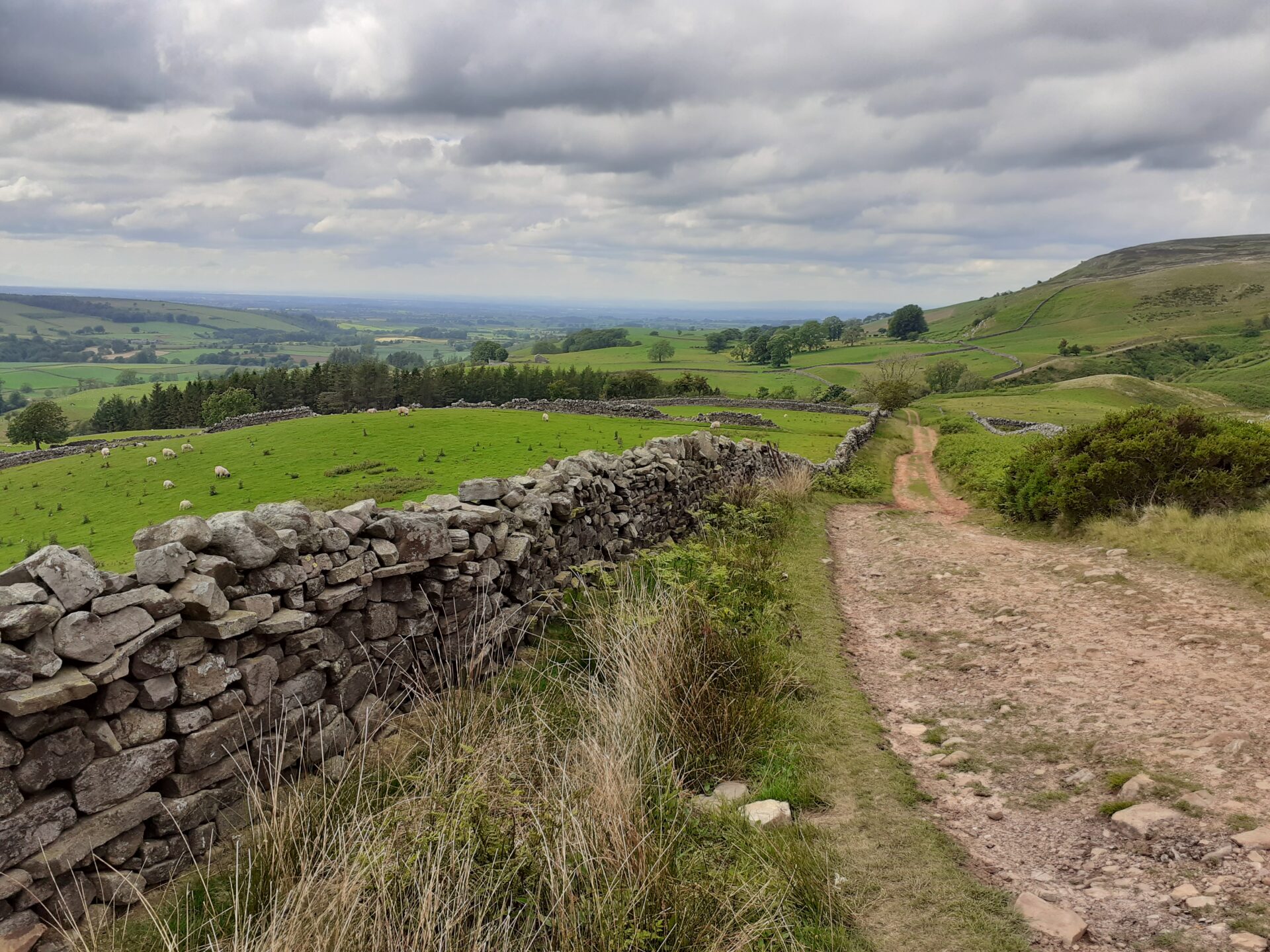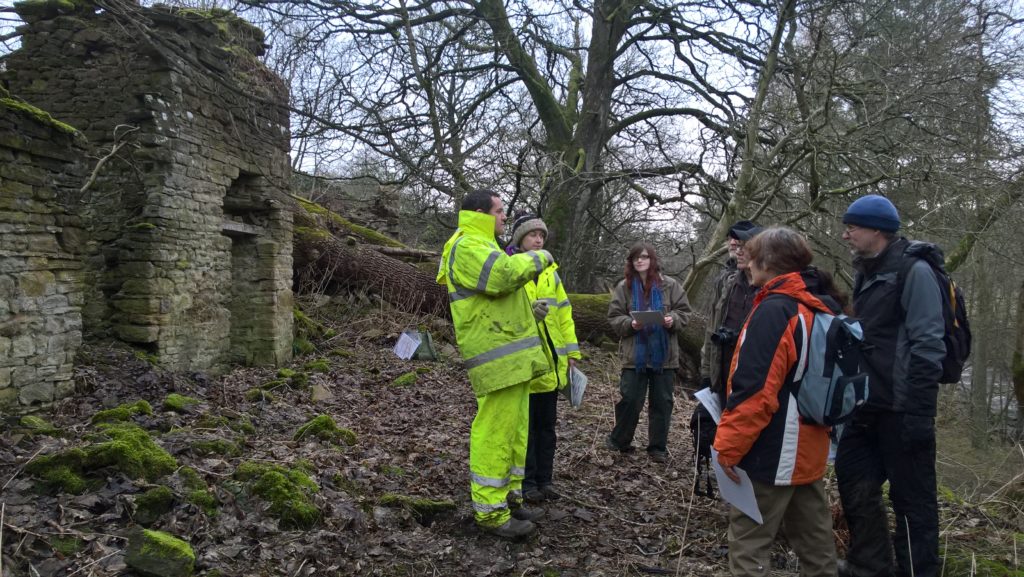News
Fellfoot Voices: Pulling back the tablecloth of time
Pulling back the tablecloth of time in Cumbria
Fellfoot Voices blog by Bruce Bennison
I’m a retired local government officer living in Newbiggin, just north of Croglin, in the heart of the Fellfoot Forward Landscape Partnership scheme area. I have lived here for over 20 years and for me this is a very special place; when I was working it was a place of retreat after the working day, now in retirement I can explore its unique character in greater depth. My particular interests are in archaeology and local history, and the Fellfoot Forward area is not short of both (in spades – if you’ll excuse the pun). Indeed it has a surprising variety of sites and stories representing a history which stretches back over 5000 years.

I first became interested in archaeology as the result of an opportunity to take part in a summer excavation as a teenager in North Wales. The site was a Bronze Age cemetery high up on the Denbigh Moors, about to be drowned by the building of a new reservoir. It was then I first discovered the particular excitement of archaeological excavation; it’s a bit like warfare, long periods of tedium interspersed by short bursts of high drama! It can also be hard physical work and I loved it. I managed to pursue the interest at University and went on to work in field archaeology and museums for much of my early career.
The Fellside area is special for many reasons and to understand its legacy of human settlement we have to look first at why people have found the area so attractive. To do that we must consider the geology and the landscape it has given us. We are all well aware of the key features of that landscape – as a backdrop there is the rising ground of the North Pennine escarpment, brooding over the string of villages that lie at its foot, from Castle Carrock down to Melmerby. To the west of this, between the escarpment and the River Eden, is a landscape of rolling green fields, crisscrossed by the veins of lanes and tracks, some of them ancient ways belonging to a time before the 19th century field walls and enclosures.

Pull back the tablecloth of time and underneath it all are layers of very different rock, shaped by the effects of the great tectonic plates of the earth pulling apart and creating a rift in the earth’s surface. For the geologically inclined this is called a Half-Graben. This process altered the normal ordered layering of rock, leading to the younger red sandstones being lower down in the valley than the older limestones which are now higher up in the Pennine escarpment. It is the eastern fracture line of the rift – the Pennine Fault – that forms the distinctive escarpment of the North Pennines. It also exposed the layers of limestone and interleaved coal and mineral layers which were to become so important to the later economic history of the area. Add to all this the subsequent effects of the ice age and the subsequent meltwaters, which sometimes scoured seemingly improbable channels running along the slopes as well as down them, and at the same time depositing huge amounts of alluvial material in the valley, we end up with the characteristic rolling landscape.

Eventually it was through this conveniently sheltered corridor, formed by the rift valley, that ancient peoples were to explore and eventually settle. Indeed the attractions of this valley and in particular the land between the river and the escarpment seem to have held special meaning for our ancestors, they have left us a dense scatter of prehistoric ceremonial and burial sites dating back 5000 years or so. We can see the evidence of their labours stretching from the impressive stone circle of Long Meg and Her Daughters in the south to Broomrigg Plantation near Ainstable, the surviving single stone (probably an outlier, like Long Meg herself) from the destroyed Grey Yauds stone circle, to the west of Newbiggin and the spectacularly placed Cardunneth Pike above Cumrew. In between are many more, now lost sites, glimpsed in the writings of antiquaries as they explored the area from the sixteenth century onwards. Some wonderful objects have also survived, now to be found in museums across the north of England; in Tullie House in Carlisle for example you can see the Croglin Moulds, a pair of stone moulds for casting a bronze spear head, dating back perhaps 4000 years. These were found around 120 years ago in Croglin; but why were they left there and what the story behind them was, we will never know – but we can enjoy trying to find out!
It is these intriguing monuments which will form some important elements of the Fellfoot Forward scheme. There is an exciting programme of community archaeology and local history research planned, involving people of all ages in a wide range of new skills and experiences. Personally I’m looking forward to seeing if this old dog can be taught new tricks, with an opportunity to update my own skills which date back to a time when we used good old fashioned optical surveying equipment such as ‘Dumpy’ levels, chains, tapes and ranging poles to capture the key features of a site on paper. Today it is all high tech and something whizzy called a ‘Total Station’ can almost do it on its own (but not quite). Fellfoot volunteers will also get the chance to use geophysical techniques which can penetrate the ground without turning a sod to help us understand what lies beneath. All this will help fill in some gaps caused by these lost sites and record those that survive in more detail for future generations.
Another less physical but no less important research process is also already in hand. This is the updating of the Victoria County History (VCH) for Cumbria; this national project was founded in 1899 to write the history of every county in England. The project was dedicated to Queen Victoria, which is how it derives its name. Volunteers in Cumbria are researching parish histories to bring them up to date (the original Cumberland County History was written in 1905), this has already resulted in a new VCH book covering Kirkoswald and Renwick and work is underway for Croglin and Cumrew. It involves careful research into every aspect of the economic and social history of the area, using the resources available through libraries and archives and increasingly online.

One key feature for the Fellfoot Forward area is the fact that almost half of it falls within the former Barony of Gilsland and the Dacre and Howard families. There are huge quantities of archives held in Carlisle and further afield which record life in the Barony from the 13th century onwards. Amongst these records are documents which highlight the expansion of industry in the north of the scheme area, particularly the mining of coal and the development of limekilns, both exploiting the available geological resources of the fellside. One name which features a lot in this process is that of James Thompson of Kirkhouse. He became Lord Carlisle’s colliery agent in 1819 and eventually was to take over the lease of the collieries and quarries in much of the area of the north Fellside. He instituted many new projects and was a canny and successful businessman.
These projects included the construction of a road through Geltsdale from the old George Pit near Gairs Colliery, southwards across New Water and over the watershed to Newbiggin. This was to facilitate the trade in coal down to Penrith via places such as Armathwaite. The evidence on the ground for all this activity include coal pits, limekilns and the remains to the old tracks which immediately predate Thomson’s road, along which the Galloway ponies carried the coal in saddle packs (they were a hardy animal of North British descent now effectively extinct but still represented by the Cumbrian Fell Pony; they are even mentioned by Shakespeare ‘Thrust him down stairs! know we not Galloway nags? Pistol – Henry IV, Part 2). The sunken ways which resulted from this constant traffic before the new road was built can be seen winding their way across the moorland, like veins across the landscape.
If you want to learn more about the VCH project take a look at www.cumbriacountyhistory.org.uk/ it is an excellent place to start learning more about this fascinating area. I am also part of the Fellfoot Forward Facebook group and encourage you to join to keep up with the Fellfoot Forward scheme, including opportunities to volunteer as part of the community archaeology and local history research projects.











